Marklin’s Tunnels Through Time

Marklin’s infatuation with large complex metal tunnels and cuttings dates back to 1900. For example, The 1900 catalogue # 1218 showed a spectacular cutting with a walled town on one mountain and a castle on the other with both mountains connected by a footbridge over the tracks. It was 50 cm. long and 41cm high.
In 1904 the impressive 2253/3-6 tunnel featured three cannons on top of the short tunnel (70cm) and 6 cannons on the long tunnel (106 cm).
In between –1902—Marklin introduced the 2523 metal tunnel which remained in the catalog until 1919. It is the subject of this article.
This tunnel had two distinguishing features. The first was an extensive system of metal railings alongside paths leading up the mountain on both sides. The second was a relatively large castle tower positioned on a circular base. Unlike the other structures on the tunnel which were soldered to the sides, the tower was simply placed on the base. As a result it is often missing from existing versions of the tunnel. Photos 1 and 2 show excellent examples of the 2523 complete with what appears to be the original castle. Note that Photo 2 is missing the trees.
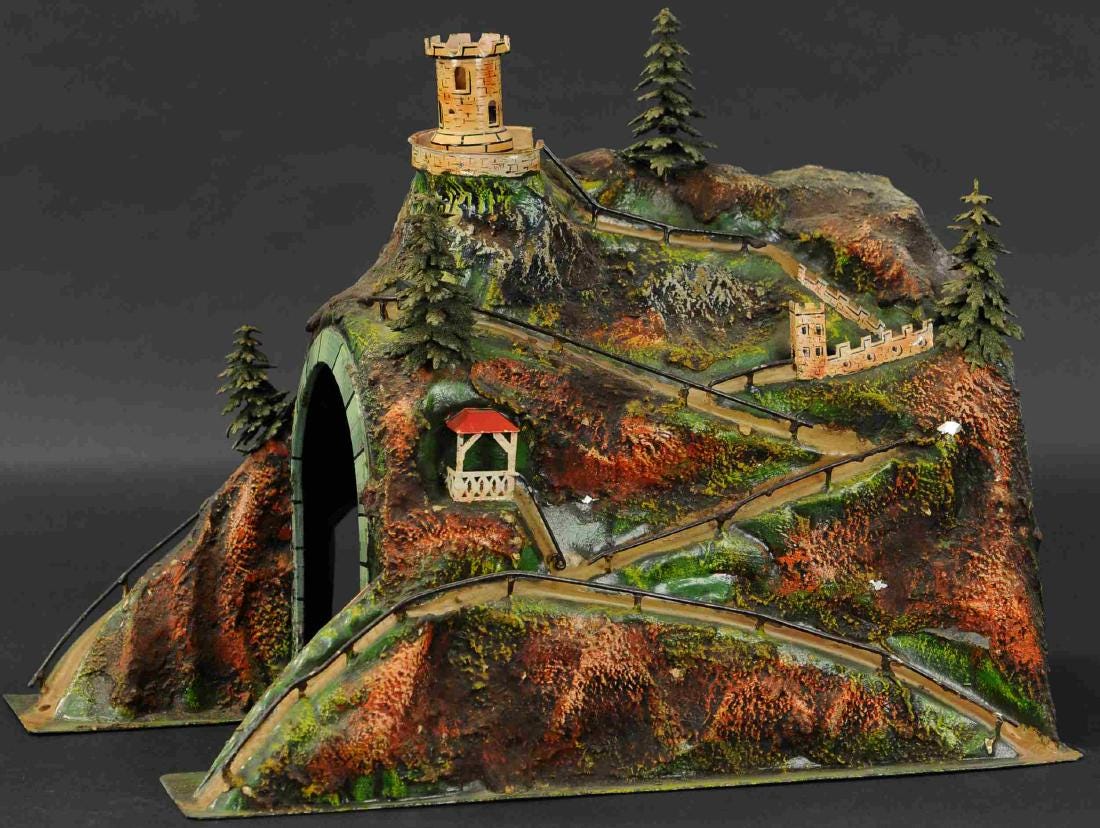
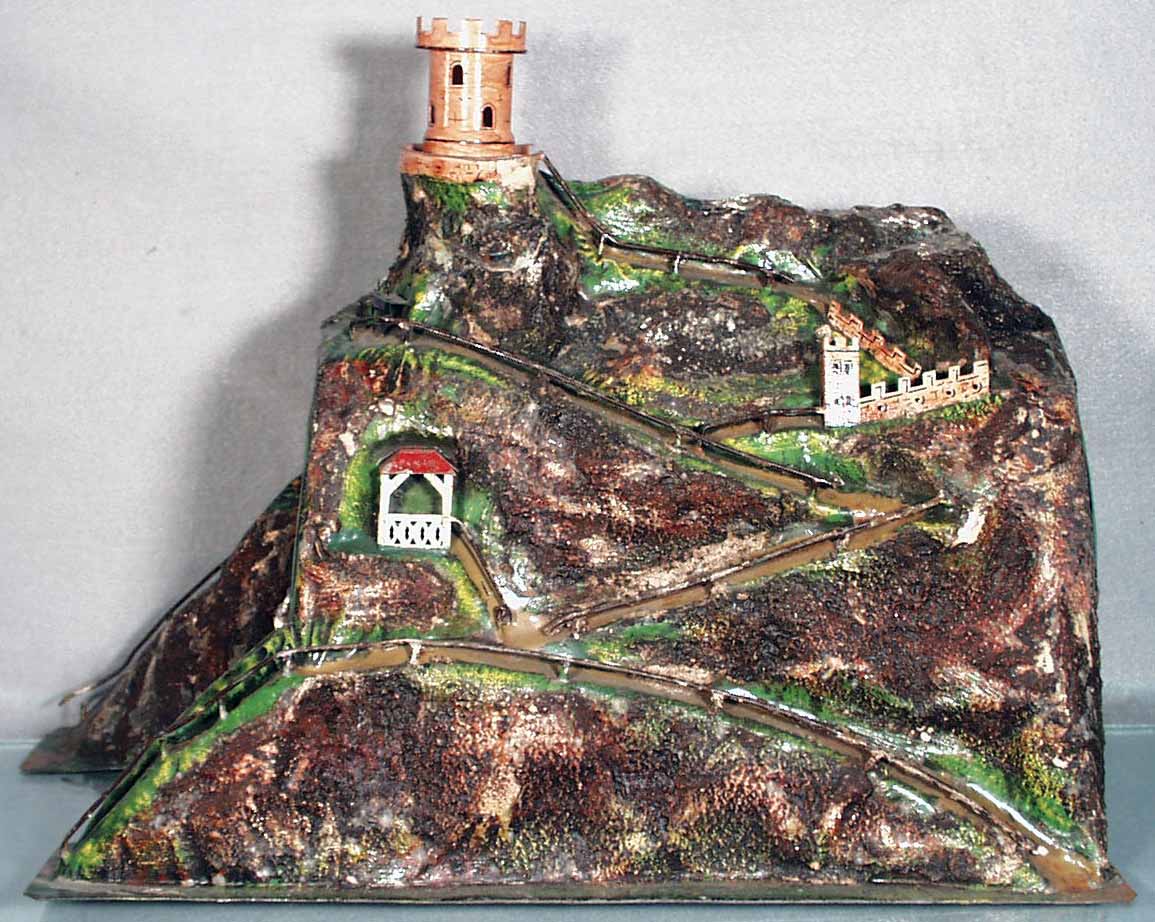
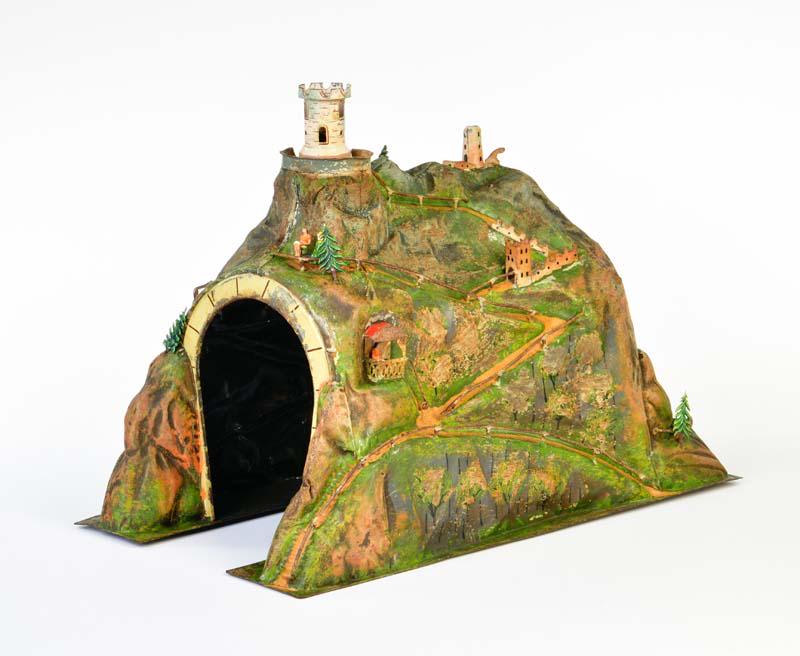
In 1909 a variation of this tunnel featured a “gallery” cut into the side. This tunnel, identified as the 2526, stayed in the catalog until 1929. (See photo 3)
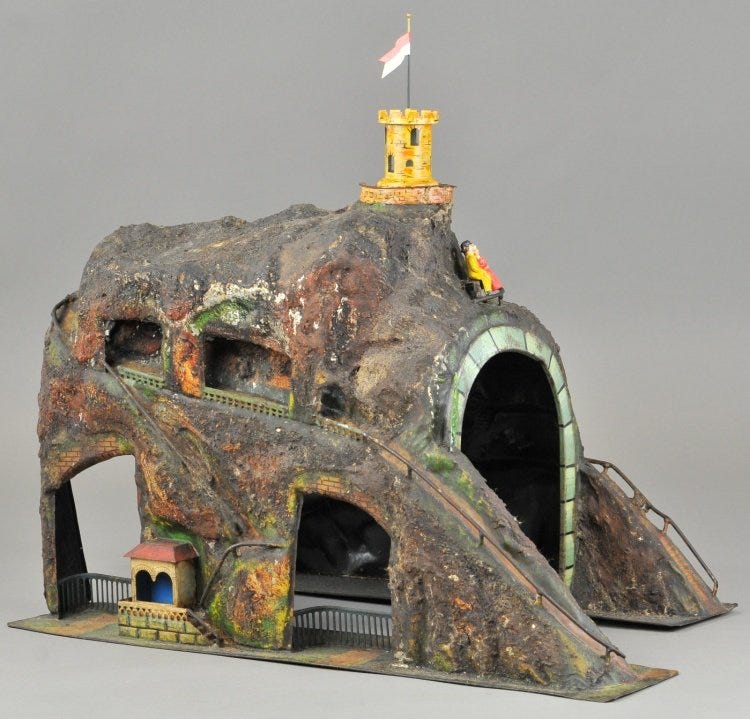
But the most amazing variation took place in 1909 when the 2524 was introduced. It in effect attached a cutting in the spirit of the cat 1218 to the 2523. The result was a monster 75 cm gauge 1 and 59 cm gauge 0 beauty that today brings tens of thousands of dollars at auction. It disappeared from the catalog after 1909. (See photo 4)
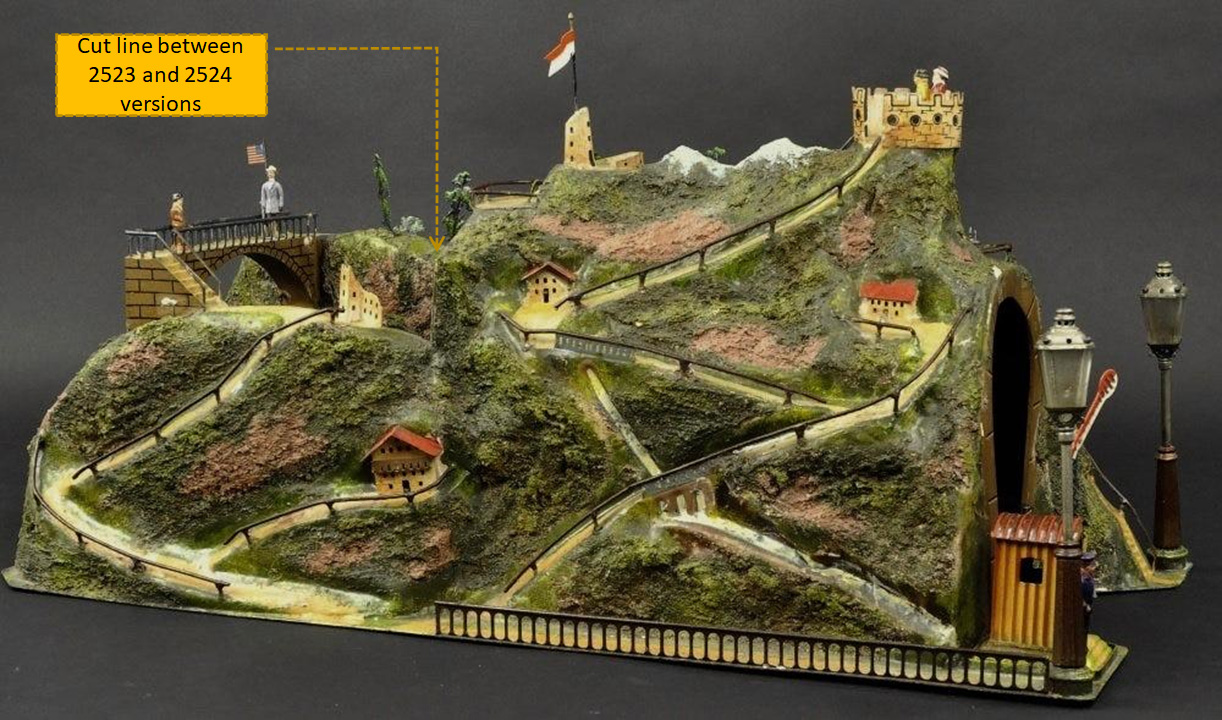
Not surprisingly my 2523 I purchased at auction did not have any castle on the circular platform. What options did I have? One alternative was to use the services of a well known craftsman who would produce a metal replica, but required me to send my tunnel to him. I decided not to accept his offer not only because of the price but I didn’t want to have the tunnel wandering around the USA any more than necessary.
Photo 5 shows what happened when I used a chess rook as a substitute. It didn’t look too bad, but I wanted something better. And lo and behold I stumbled on to Paul Deardoff’s site and learned that he could supply the replica.

Before showing you the results of Paul’s efforts I’d like to share with you photos of various castles from Paul’s files.

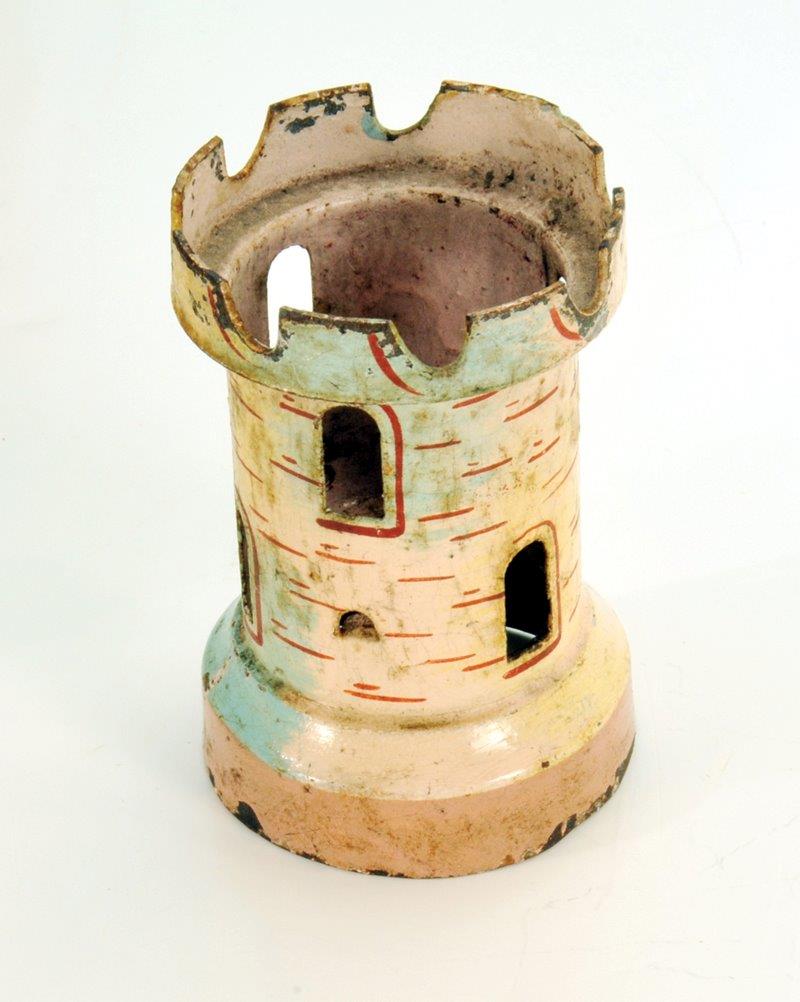
Paul’s version seems to fit very well with my tunnel as can be seen in Photos 10 and 11. You will note that I have placed some trees into the predrilled holes. The original trees were metal and two dimensional. Also note the young lady sitting on a bench facing the entrance to the tunnel. Marklin cared nothing about scale. My figure is about the same size as an original Marklin and of course is a super giant compared to the small houses, gazebo, and other decorative elements on the tunnel.

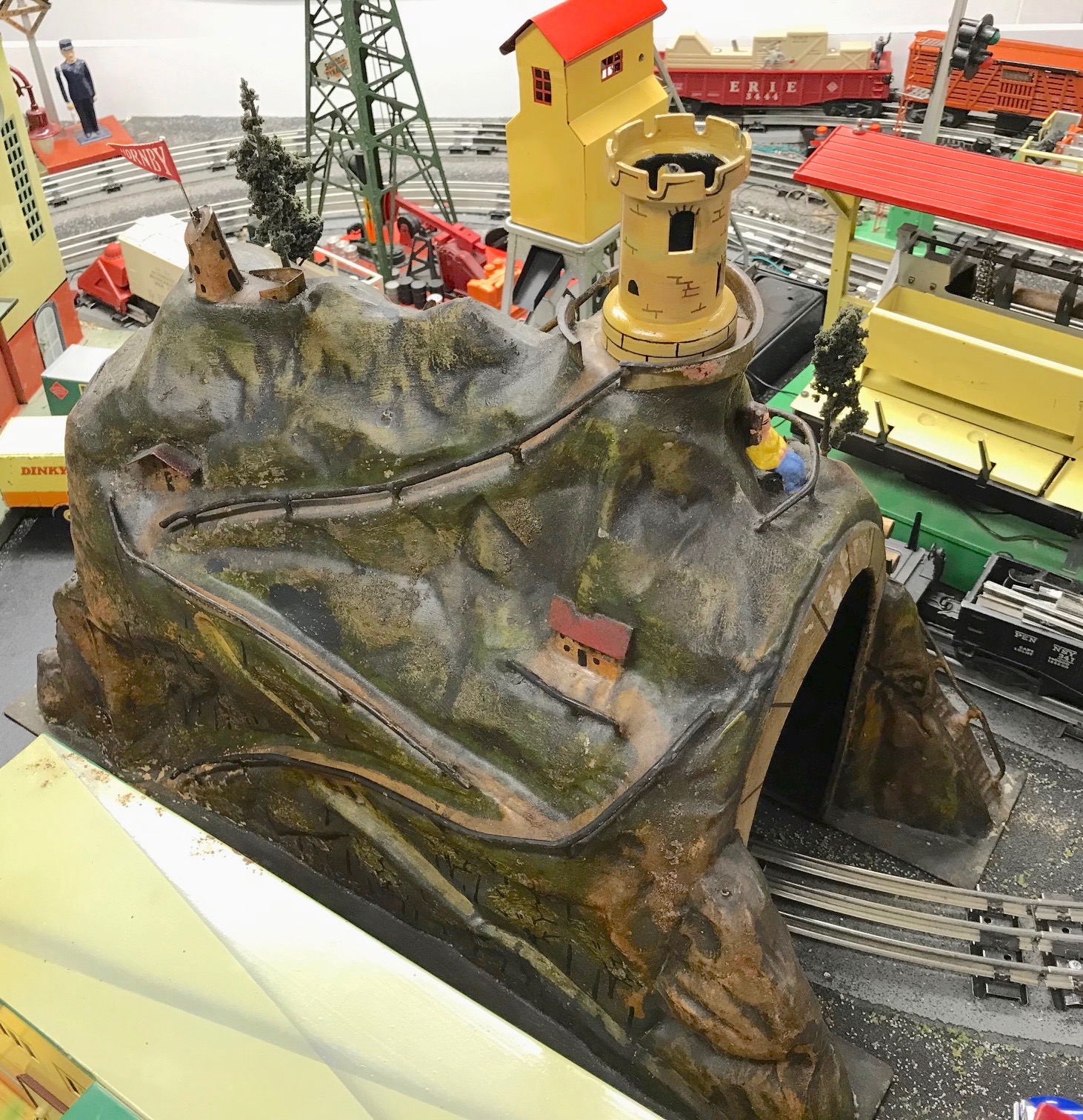
The Marklin 2523 tunnel is not extremely rare in comparison with, for example, the 2524. But to find it together with all its parts including the castle and the trees is a real challenge. Good hunting.
References
- The tunnel dates and dimensions in this article can be found in Otto Höllerer’s book Marklin- Handbuch (Germany, 1999).
- Some photos from Bertoia Auctions and Antico Mondo as noted in captions.

